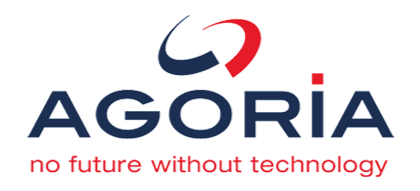Dear Carta+ Customer,
Carta+ wants to inform his customers about an important information release received earlier this month from the worldwide contactless chips supplier, NXP.
Carta+ delivers exclusively NXP products for the Mifare cards series.
“MIFARE Classic is one of the most widely used contactless smart card IC worldwide. It was invented in 1994 and first used in a public transport fare collection system in 1996. Today MIFARETM products are used in more than 650 cities in over 50 countries in more than 40 different applications globally. Increasingly also MIFARE Classic implementations on NXP’s SmartMX platform are deployed.
Up to now MIFARE Classic ICs are featuring a unique identifier (UID) with the length of 4 Byte. With the accumulated and estimated global demand of MIFARE Classic ICs, we expect that the market will run out of 4 Byte unique IDs by the end of 2010.
This will also impact the availability of 4B UIDs for MIFARE Classic implementations of NXP and our licensees on dual interface ICs, contactless SIMs and secure elements. In order to facilitate the migration of certified SmartMX and licensee products, NXP will provide a limited number of 4B unique IDs for these products until end of 2012 depending on estimated and accumulated demand and availability.
NXP acknowledges that the uniqueness of IDs is typically an important element of many contactless system designs. Precautions need to be implemented for non unique IDs in automatic fare collection, closed loop payment and access management applications with respect to the following:
· back office reconciliation
· blacklisting of cards
· card access right management
Therefore NXP offers the following options to ensure sustainable operation of MIFARE Classic installations:
1. NXP will offer MIFARE Classic ICs with 7 Byte unique IDs (7B UIDs)1 as the recommended product solution. Sample cards for design in activities are available now. Volume production starts in Q2 2010.
All NXP MIFARE ICs introduced after 2001 – MIFARE Ultralight, MIFARE Ultralight C, MIFARE DESFire, MIFARE DESFire EV1 and MIFARE Plus – already feature 7B
UIDs. Therefore, many partners within the MIFARE eco-system are familiar with the use of 7B UIDs. 4B UID and 7B UID based smart cards can co-exist in the same infrastructure.
MIFARE Plus was introduced with the option of 4 B UID for backwards compatibility during migration and a future proof 7B UID version.
2. NXP will continue to offer MIFARE Classic and MIFARE Plus products but with 4 Byte identifiers taken from old NXP ID ranges instead of 4 Byte unique identifiers. The number ranges used for those 4 Byte identifiers will be chosen with maximum care to reduce the probability of duplicate IDs in your installations.
NXP will collect and share best practices on how to handle non unique IDs through application notes, Q&As, trainings and webinars.
In addition, NXP will offer a downloadable list of the IC identifiers which are used for each reel or wafer. This enables pro-active impact analysis before issuing new cards into contactless systems.
3. For applications that require a higher level of security, NXP recommends to migrate from MIFARE Classic to MIFARE Plus or MIFARE DESFire EV1 with 7B UIDs.
4. MIFARE Classic and upcoming MIFARE Plus implementations on NXP’s SmartMX platform will also be available with 7B UIDs and 4 Byte identifiers taken from ID range
xFh according to ISO/IEC 14443-3.
For SmartMX products according to ISO/IEC 14443-4 without MIFARE emulations, 7B UID based solutions are already available since the year 2001 and widely used.
To support you in finding the best option for your specific application, NXP provides application notes, Q&As and technical support. Please get in touch with your NXP contact.
In addition we have scheduled interactive Webinars on this topic. The first one will take place May 26th 2010. Please see detailed information on www.MIFARE.net.
NXP is committed to serve the market with innovative and evolutionary smart card ICs that contribute to the sustainability of our customers’ services.”
the MIFARE team
NXP Semiconductors
http://www.nxp.com/
1 According to ISO/IEC 14443-3, 4B UID is called single size UID. 7B UID is called double size UID.



